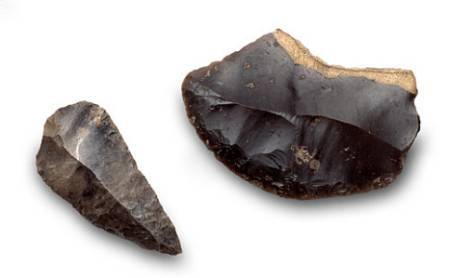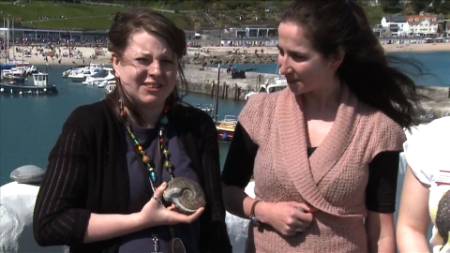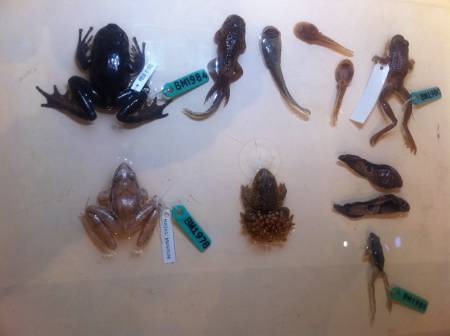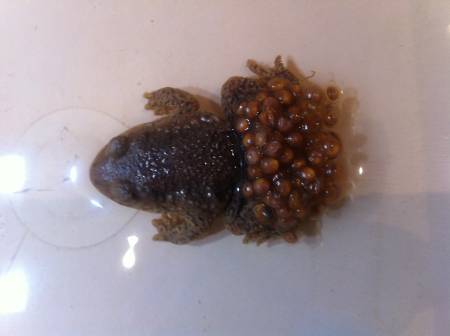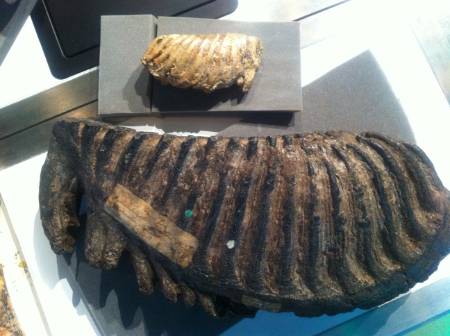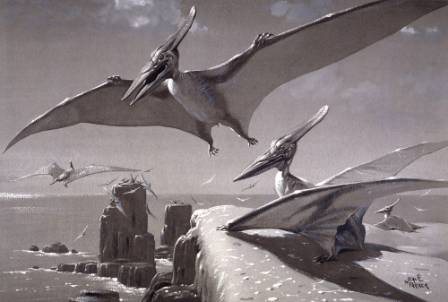Fascinating giants that roamed four continents from circa 700,000 to 4,000 years ago: woolly mammoths (Mammuthus primigenius) have been the subject of countless conversations here at the Museum in recent months. So Nature Live thought they would go with the flow by tackling the question of just 'Why did the mammoths go extinct?' Prof Adrian Lister, an expert in vertebrate palaeobiology, led this Nature Live and presented the two main arguments.
Climate problems?
The first argument Adrian presented was the climate change theory: that mammoths used to rely on grasses as their primary food source, and were exclusively vegetarians. These grasses produced a meadow-like landscape, which was a hugely rich and high quality food source for the mammoths.
At the end of the last ice age, around 14,000 years ago, a warming climate caused forest habitat to spread north and gradallly replace grasslands that the mammoths relied on for food.
During the last ice age, these grass meadows expanded across the northern hemisphere, expanding the mammoths' geographic range. These grass meadows were above the tree line, as the grasses could successfully survive in lower temperatures than trees. Here fascinating video footage lit up the Attenborough Studio's big screens, showing the growth and change of distribution of these meadow grasslands across the last ice age.
Woolly mammoths roamed the earth between ca. 700,000 to 4,000 years ago, before they were driven to extinction.
Adrian then described the range of specialist adaptations that woolly mammoths used to survive in this extreme habitat. The most obvious of these was the thick hair which insulated them from the harshly cold weather conditions. It turns out that mammoths actually had two types of hair: a very fine hair close to the skin trapping and warming the air for insulation, and a coarser hair on the outside to help shield them from cold wind and rain. In addition to these adaptations, woolly mammoths also had a thick layer of fat underneath their skin to further insulate them.
To the audience's amazement at this point a true sample of woolly mammoth hair was put underneath the visualiser in the Studio. The hair was thousands of years old yet fully intact, but this was only the start. Adrian then stepped forward to pick up a whole mammoth lower jaw, illustrating how it would swing back and forth when chewing.
Holding this in his hands in front of the live audience visually demonstrated just how large the teeth of a mammoth were, and the large size of the surface area required for chewing tough plant material like grass. Adrian made it clear that studying mammoth teeth gives researchers a much clearer idea of what they ate. With this increased understanding of what mammoths ate, researchers can better pinpoint factors that could have eventually led to their extinction.
A woolly mammoth lower jaw like the one presented during the Nature Live by Adrian Lister, demonstrating their huge teeth used for grinding plant matter.
Frozen mammoths have even been discovered with food content still inside their stomachs or intestines, their 'last supper', as it were. Studying these remains of partially digested plant matter taken from inside a preserved woolly mammoth has proven that they certainly did eat grass as a food source.
Knowing for sure that mammoths ate grass supports the climate change theory of habitat change, as the grass plains began to contract at the end of the last ice age around 14,000 years ago. This was because the earth's climate was warming, and forest habitat was spreading north so gradually displacing the grasslands that mammoths relied on for their food.
Adrian explained how, by using radiocarbon dating, we can age mammoth remains very accurately, and this has now been used to age and plot every mammoth fossil ever found. This in turn means that scientists like him can identify and mark the change in woolly mammoth distribution over time. This crucial extinction timeline can then be matched against the known changes in reduced grass cover and the increased spread of forest growth up into the woolly mammoth's natural range.
When scientists compare the changing distribution of woolly mammoths to the changing distribution of their grasslands, they match. This suggests that the spread of the forest upwards into the higher latitudes would have pushed the woolly mammoths north. So it was this change in vegetation from grassland to forest that was a major contributing factor, ultimately leading to the mammoth's extinction.
As the woolly mammoths' range contracted they became extinct. Studying them now could help prevent future mammal extinctions.
At this point Adrian then put forward a second theory, saying that "nothing in science is ever that simple." This second theory is that early humans could themselves have been responsible for driving the woolly mammoths to extinction.
Hunted to extinction?
Evidence for the 'people theory' is that the period of time that woolly mammoth numbers were declining also coincided with a rapid increase in the numbers of people. There have been skeleton remains of mammoths found which show damage from a flint tool splintered off in the bone. In the studio, images of this were brought up on the screen, clearly showing a human-crafted spearhead lodged within a mammoth bone. This is evidence that early humans did at least occasionally hunt mammoths as large game, either as a source of food, or for materials to build shelter.
Flint spear heads have been found splintered-off within mammoth fossils proving that they were occasionally hunted by early humans.
As this Nature Live approached its end, Adrian explained that both of these theories could in fact have worked together at the same time to conspire against the woolly mammoth, thus driving it to extinction. The change in the climate driving forests to spread north would have forced the woolly mammoth into very restricted habitat patches, making them a heavily endangered species; this, combined with hunting by humans could have dealt the final blow to the woolly mammoths, sending them to the icy grave of extinction.
The event did end on a more positive note when Adrian explained that the woolly mammoths' death was not in vain. Studying and understanding the reasons why large mammals like mammoths went extinct could help scientists like Adrian prevent the extinction of other large mammals in future. And research on mammoths is now being used to help try and protect African elephants (Loxodonta africana) from following their footsteps.
Watch Adrian summarise the theories behind the extinction in the Museum's film from the Mammoths: Ice Age Giants exhibition, which closes on 7 September:






